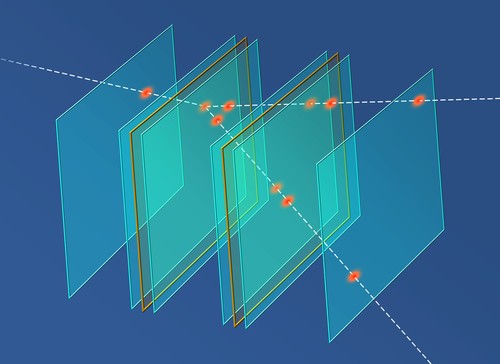AI in particle physics: Can it unveil discoveries?

Particle physics is an exciting field of study that aims to uncover the fundamental building blocks of the universe. For years, scientists have been working to improve the techniques used to detect and analyze particles created in particle collisions. Now, an international team of researchers from the Institute of Nuclear Physics of the Polish Academy of Sciences (IFJ PAN) is using artificial intelligence (AI) to enhance particle track reconstruction. This development shows promising implications for high-energy physics experiments, but the question remains: can it revolutionize the field?
AI is a buzzword used to describe the use of automated algorithms to gain insights from data, across different industries. In particle physics, AI can help identify particles, reconstruct their tracks, and determine the diagnostics of a collision more rapidly, thus providing new insights. The technique has shown significant promise in recent years, and now the team at IFJ PAN has taken it a step further.
Their paper, published in Computer Science, demonstrated the effectiveness of AI for rapid particle track reconstruction compared to classical algorithms currently employed in high-energy physics experiments. Using deep neural networks, the team trained the AI to reconstruct particle tracks using simulated data. They used this training to help the AI detect particle paths and determine if it was worth saving for further study. This process could significantly reduce the time required for analyzing data, which is a significant challenge in high-energy physics experiments.
The team at IFJ PAN has developed a deep neural network with around two million configuration parameters, which was trained using over 40,000 particle collision simulations. During testing, only hit information was given to the neural network, and the output was compared to the original particle paths. The results were promising, showing that the AI can accurately reconstruct secondary particle tracks, similar to classical algorithms.
Professor Marcin Kucharczyk, who is part of the team at IFJ PAN, explained that the AI they designed is a deep-type neural network. It consists of an input layer comprising 20 neurons, four hidden layers of 1,000 neurons each, and an output layer with eight neurons. All the neurons of each layer are connected to all the neurons of the neighboring layer.
The next experiment in which the AI from IFJ PAN will be tested is the Muon on Electron Elastic Scattering (MUonE) experiment. The MUonE experiment examines the measured values of the anomalous magnetic moment of muons, which differ from the predictions of the Standard Model. If successful, this experiment could lead to discoveries that indicate new physics and a better understanding of the fundamental structure of our universe.
While the development of AI for particle physics shows a lot of promise, some experts in the field remain cautious. The methods used to reconstruct particle tracks are complex and require rigorous testing. The results from the IFJ PAN team demonstrate the AI's potential in detecting and analyzing particles, but some scientists believe that further testing is needed to confirm its effectiveness.
In conclusion, the use of AI in particle physics holds great promise for the future of high-energy physics experiments. This development could significantly reduce the time required to analyze data and enhance our understanding of the universe's building blocks. The pioneering work of the IFJ PAN team has opened up new avenues for research and could lead to discoveries. However, this development is not without its skeptics, and the method will require further testing and evaluation before its effectiveness is fully established.

 How to resolve AdBlock issue?
How to resolve AdBlock issue?